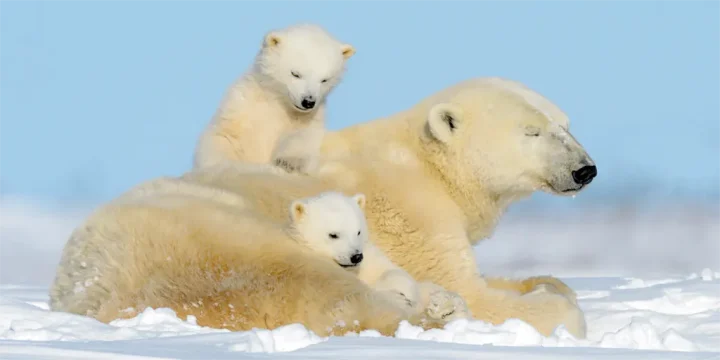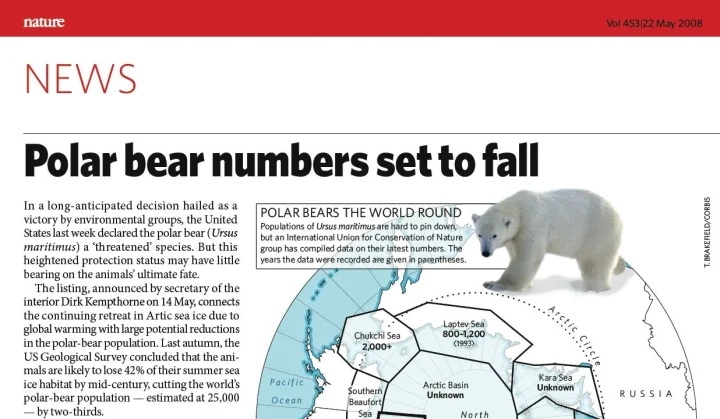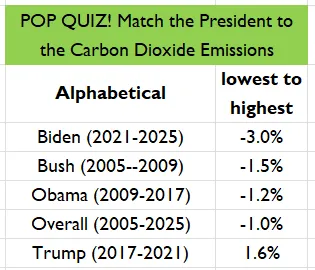By Susan Crockford
A global warming miracle has happened. While no scientist worldwide has ever drawn a straight line between greenhouse gas emissions and population declines in a species considered at risk due to climate change, a new paper just published in Science Magazine claims to have performed this unlikely feat for polar bears. It’s called “Unlock the Endangered Species Act to address GHG emissions.”
Note this analysis has not been peer reviewed: as a “Policy Forum” contribution, it’s considered by the journal to be a public interest commentary, not a research paper.
One might be forgiven for asking whether this work represents solid, reproducible science or simply well-timed, sciency-looking rhetoric ready-made for the litigious Center for Biological Diversity to pressure the US government to increase protections for polar bears before the 2024 US election. It is surely no coincidence that this paper made its appearance near the seasonal low for Arctic sea ice as well as during the 15-year anniversary of the ESA listing of polar bears as ‘threatened’ and the 50th anniversary of the ESA itself.
Moreover, knowing this paper was in the pipeline might explain why the 2022 government report on the most recent Western Hudson Bay polar bear decline, which I discussed yesterday, has been kept secret for so long: the results of that report are cited in this new Science paper as supporting evidence that sea ice declines are responsible for recent population declines, which Reuters said in December was clearly not the case for the period 2017-2021.
Background
Polar bear specialist Steven Amstrup and climate modeller Cecilia Bitz previously collaborated on a 2010 paper that aimed to show polar bears, added to the US Endangered Species List on the basis of a US government report by Amstrup and colleagues in 2007 (as reported in Nature, above, in May 2008). It predicted 2/3 of the world’s polar bears were on track to disappear by 2050 but could be saved if GHG emissions were curtailed (Amstrup et al. 2007, 2010; Courtland 2008).
That 2007 Amstrup prediction failed miserably, but that’s another story: actually, a rather big one (Crockford 2017, 2019).
Undeterred, the pair have teamed up again to push the same dead horse in a different direction (Amstrup and Bitz 2023), based on a 2016 paper claiming an apparent linear relationship between GHG emissions and sea ice decline (Notz and Stoeve 2016).
In a University of Washington press release, Amstrup stated: “In this paper, we reveal a direct link between anthropogenic greenhouse gas emissions and cub survival rates.”
While Amstrup’s long-standing association with activist organization Polar Bears International (which helped fund the paper) and his impatience with the lack of ‘action on climate change’ means his biases on global warming are well-known, co-author Bitz also seems to have strong opinions about fossil fuel emissions that similarly raise questions about her scientific impartiality:
“I hope the U.S. government fulfills its legal obligation to protect polar bears by limiting greenhouse gas emissions from human activity,” Bitz said. “I hope investments are made into fossil fuel alternatives that exist today, and to discover new technologies that avoid greenhouse gas emissions.” [University of Washington [press release, 31 August 2023]
The paper
The idea of linking all GHG emissions directly to cub survival in polar bears sounds pretty bizarre. But if no one else has ever done this before, why would the authors choose to publish their results as a non-peer-reviewed commentary paper, which gives readers no assurance their work is anywhere close to being a plausible scientific analysis?
If peer-review is considered essential for any scientific work to be considered ‘legitimate,’ as many prominent polar bear scientists — including Amstrup himself — have insisted (e.g. Harvey et al. 2018), this paper deserves to be dismissed as irrelevant.
Moreover, the entire claim that GHG emissions can be linked directly to polar bear cub survival (i.e., more emissions, more cub deaths) falls apart with the knowledge that documented incidents of poor cub survival in Western Hudson Bay in the 1980s, which I mentioned yesterday, were not included in the 2020 baseline model used to model results for this new paper.
The 2020 model (Molnar et al. 2020) not only uses the discredited RCP8.5 “business as usual” climate change scenario to generate it’s scary-sounding results, it also depends almost completely on base-line data from Western Hudson Bay from 1989-1996 only, which conveniently ignores published data on poor body condition of WH females and poor cub survival in the early 1980s when sea ice wasn’t an issue (Derocher and Stirling 1995; Ramsay and Stirling 1988).
Cub survival was so bad in the 80s that a number of females lost entire litters (see abstract for Derocher and Stirling 1992 below): 1983 was particularly bad.
In addition, the sea ice data used for the Notz and Stroeve paper only go to 2015, while the 2020 Molnar paper uses ice data only to 2016, which conveniently ignores the lack of a declining trend in summer sea ice (September average) with increasing GHG emissions documented from 2007 to 2022, as well as recent sea ice conditions that have been like the 1980s in Western Hudson Bay.
Conclusion
All this means the 2023 Amstrup and Bitz paper is just as flawed as the 2020 Molnar paper and the 2007 Amstrup prediction and should be ignored.
References
Amstrup, S.C. and Bitz, C.M. 2023. Unlock the Endangered Species Act to address GHG emissions. Science 381(6661):949-951. pdf here.
Amstrup, S.C., DeWeaver, E.T., Douglas, D.C., Marcot, B.G., Durner, G.M., Bitz, C.M. and Bailey, D.A. 2010. Greenhouse gas mitigation can reduce sea-ice loss and increase polar bear persistence. Nature 468: 955–958.
Amstrup, S.C., Marcot, B.G. & Douglas, D.C. 2007. Forecasting the rangewide status of polar bears at selected times in the 21st century. US Geological Survey. Reston, VA. Pdf here
Atkinson, S., N., , J. Boulanger, M. Campbell, V. Trim, J. Ware, and A. Roberto-Charron. 2022. Aerial survey of the Western Hudson Bay polar bear subpopulation 2021. Final Report.,Igloolik, NU.
Courtland, R. 2008. Polar bear numbers set to fall. Nature 453:432-433.
Crockford, S.J. 2017. Testing the hypothesis that routine sea ice coverage of 3-5 mkm2 results in a greater than 30% decline in population size of polar bears (Ursus maritimus). PeerJ Preprints 19 January 2017. Doi: 10.7287/peerj.preprints.2737v1 Open access. https://peerj.com/preprints/2737/
Crockford, S.J. 2019. The Polar Bear Catastrophe That Never Happened. Global Warming Policy Foundation, London. Available in paperback and ebook formats.
Derocher, A.E. and Stirling, I. 1992. The population dynamics of polar bears in western Hudson Bay. pg. 1150-1159 in D. R. McCullough and R. H. Barrett, eds. Wildlife 2001: Populations. Elsevier Sci. Publ., London, U.K. See abstract below:
Abstract: Reproductive output of polar bears in western Hudson Bay declined through the 1980’s from higher levels in the 1960’s and 1970’s. Age of first reproduction increased slightly and the rate of litter production declined from 0.45 to 0.35 litters/female/year over the study, indicating that the reproductive interval had increased. Recruitment of cubs to autumn decreased from 0.71 to 0.53 cubs/female/year. Cub mortality increased from the early to late 1980’s. Litter size did not show any significant trend or significant annual variation due to an increase in loss of the whole litter. Mean body weights of females with cubs in the spring and autumn declined significantly. Weights of cubs in the spring did not decline, although weights of both female and male cubs declined over the study. The population is approximately 60% female, possibly due to the sex-biased harvest. Although estimates of population size are not available from the whole period over which we have weight and reproductive data, the changes in reproduction, weight, and cub mortality are consistent with the predictions of a densitydependent response to increasing population size. [my bold]
Derocher, A.E. and Stirling, I. 1995. Temporal variation in reproduction and body mass of polar bears in western Hudson Bay. Canadian Journal of Zoology73:1657-1665. http://www.nrcresearchpress.com/doi/abs/10.1139/z95-197
Harvey, J.A., van den Berg, D., Ellers, J., Kampen, R., Crowther, T.W., Roessingh, P., Verheggen, B., Nuijten, R. J. M., Post, E., Lewandowsky, S., Stirling, I., Balgopal, M., Amstrup, S.C., and Mann, M.E. 2018. Internet blogs, polar bears, and climate-change denial by proxy. Bioscience 68: 281-287. DOI: 10.1093/biosci/bix133 Open Access, available here. Supplementary data file available here and the data for the principal component analysis is available here and (h/t to R. Tol), the R code is available here Corrigendum here (issued 28 March 2018).
Molnár, P.K., Bitz, C.M., Holland, M.M., Kay, J.E., Penk, S.R. and Amstrup, S.C. 2020. Fasting season length sets temporal limits for global polar bear persistence. Nature Climate Change. https://doi.org/10.1038/s41558-020-0818-9 pdf here.
Notz, D. and Stoeve, J. 2016. Observed Arctic sea-ice loss follows anthropogenic CO2 emmission. Science 354(6313):747-750. pdf here.
Ramsay, M.A. and Stirling, I. 1988. Reproductive biology and ecology of female polar bears (Ursus maritimus). Journal of Zoology London 214:601-624. http://onlinelibrary.wiley.com/doi/10.1111/j.1469-7998.1988.tb03762.x/abstract





